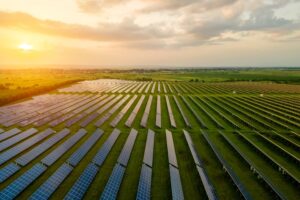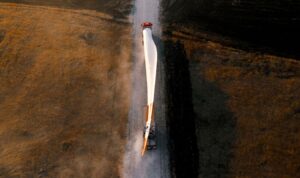Introduction:
Permaculture Principle Number 4: Use Renewable Resources emphasizes the importance of only using resources that are naturally replenished and sustainable. This includes anything from water, to energy, to building materials. By utilizing renewable resources, we are hopefully, reducing our impact on the environment and helping ensure that future generations will have access to these essential resources.
Overview
This principle is renewable energy sources such as solar, wind and hydro power to natural materials like wood, hemp, bamboo, or clay. Using renewable resources is essential for the long-term sustainability of a permaculture design as these resources can be replaced or replenished without any harm to the environment. This principle encourages us to think of ways in which we can reduce our dependence on non-renewable resources and instead look for alternatives that will not only promote sustainability but also help reduce costs.
When I was younger one of my friend set up a windmill on their property. It produced enough energy to lower their electric bill considerably. I was jealous. I lived in suburbia. No wind mills for me and I couldn’t afford solar.
Renewable Energy
Renewable energy source are big in permaculture design as they are touted to be ecologically sustainable, cost-effective and rely on natural, renewable resources instead of finite non-renewable sources.
Solar power

Solar power is one of the most widely-used sources of renewable energy in permaculture design as it requires no fuel and can be easily harnessed from the sun. In a permaculture design, solar panels can be used to provide electricity for lighting, heating and other appliances. Solar power can be a beneficial source of renewable energy in permaculture design, but there are some downsides to consider.
Solar panels require chemicals in order to produce electricity, such as cadmium lead, any many more which can be toxic if not handled properly and throwing them in the landfill does not count as handling properly.
Additionally, the lifespan of solar cells is limited and they will eventually need to be replaced and usually far short of the 25-30 years the solar industry says they will last. The old solar panels end up in landfills usually in poor countries where people trash picking to live get exposed to the many chemicals in solar panels and it soaks into the ground water.
It’s more expensive to recycle solar panels than make new ones so without governmental interference recycling seems unlikely in a free market society and even then the cost will get passed on to consumers.

Harvard Business review did a sturdy indicating the cost of clean up will make solar 4 times more expensive than energy analyst have been saying. Does any of that mean I don’t like solar? No. I have, and will likely increase solar. It has it’s place especially in more remote area. What it means is there is a dark side to solar and wind no-one is willing to talk about. It is forbidden. I like to hear both sides of an issue and then I will decide for myself.
Wind Power

Wind power is another renewable energy source that is used in permaculture design, as it requires no fuel and can be easily harnessed from the wind. But is that true? They do not run on fuel oil, that is true but they do require lubricant oil. Fairly large amount of it and won’t run without it. They, at least at this point in time, can’t be maintained or built without a pretty large fossile fuel use. They also require a significant amount of space in order to be installed and operated effectively and they seem to kill a lot of birds.
Wind turbine can be recycled much better than solar panels. About 90% of the parts are recyclable But there is the issue of the 100 to 300 foot blades. They are replaced every 10 years as of this writing. They have been ending up in the landfill. Thats a lot of landfill.
There is one enterprising guy in Texas who is trying to recycle them into various products, so good for him!
Wind turbines can be used to generate electricity for lighting, heating and other appliances in a permaculture design and if I had more wind where I live I’d consider one on a small scale but as with solar they are not problem free and don’t seem likely be be able to replace petroleum, natural gas or coal completely if for not other reason than the wind does not always blow or the sun shine. Damn I hope I don’t get kicked out of the permaculture club!
Still I have a lot of confidence in human ingenuity and I’m sure these product will improve or who knows maybe a completely original solution will be developed.
Biomass
Biomass is another widely used renewable resource in permaculture designs as it utilizes organic materials such as wood chips or animal waste to create electricity. It is similar to fossil fuels in that it releases carbon dioxide during the burning process, but it does not produce as much CO2 and other pollutants as coal or petroleum. Biomass energy can be used in many ways such as heating buildings, producing electricity for lighting, cooking food, drying clothes and irrigating farms. This renewable resource is an important part of permaculture designs and can help reduce the need for fossil fuels in certain areas.
Hydropower
Hydropower is another renewable energy source that can be used in permaculture designs. This type of renewable energy utilizes the power of moving water to generate electricity which can then be used for various purposes. Hydropower is an important part of permaculture as it helps to reduce emissions from other energy sources and can even be used in areas that do not have access to grid electricity.
Geothermal energy
Geothermal energy is another renewable energy source that can be used in permaculture designs. This type of energy utilizes the heat stored underground to generate electricity and it is considered one of the most efficient forms of renewable energy. Geothermal power plants are able to provide clean and reliable electricity without producing any emissions, making them an important part of permaculture designs.
I seriously cheeked into this one. I don’t know why it’s not used more. I’m sure like all the others there are drawbacks one of which is upfront cost which is why I have not done it. But if money were no object this is the one I’d choose.
The use of renewable energy sources in permaculture design is essential for the sustainably of the design and helps ensure that our projects are not contributing to climate change and resource depletion. I’m all for that, however, we should educate ourselves on both the good and bad and make informed.
Renewable Natural Materials
Natural materials like wood, hemp, bamboo, and clay can be used in permaculture projects to create structures that are both aesthetically pleasing and ecologically sustainable. Wood is a durable material that can be used to build fences, decks, trellises and other outdoor structures that require strength and stability. Hemp is a versatile material that can be used to make fabric, rope, and paper. Bamboo is another sustainable material that can be used to create furniture and other objects for use in the garden.
Hemp grows quickly and can produce yields of up to five tons per acre, making it an ideal crop for permaculture projects. Hemp can be used to create cloth, paper, rope, and even food products like milk and hemp seeds. By investing in a crop that is sustainable and has the potential to provide multiple benefits, we are taking steps towards creating a more ecological design.
Bamboo is an incredibly fast-growing plant, with some species having the potential to grow up to four feet in one day! This makes it an ideal choice for permaculture designs since it can provide quickly renewable resources, reducing resource depletion. Bamboo can be used to create fences, trellises, shade structures and building materials such as flooring, furniture, cabinets and doors. It’s also an excellent material for making paper and fabric, which can be used in a wide range of applications. Some of my favorite clothes are made from bamboo! It’s an exceptionally soft fabric. Additionally, bamboo is naturally resistant to pests and disease, making it a great choice for those looking for a sustainable resource that will stay healthy over time.
Finally, bamboo is a great choice for those who want to create living structures in their permaculture project, as it has the potential to be used as a scaffold for climbing plants such as vines and flowers. Utilizing these living structures will add more layers of complexity to your permaculture design, while adding beauty and natural habitat for beneficial insects and birds.
Overall, hemp, wood and bamboo are excellent choices for permaculture projects due to their sustainability, potential yield, and usefulness in creating a variety of structures.
Conclusion
Ultimately, it comes down to finding what works best for you given your project’s requirements and budget constraints. So educate yourself. Don’t feel limited or intimidated by ‘green’ solutions – explore all the possibilities before committing to one option!
